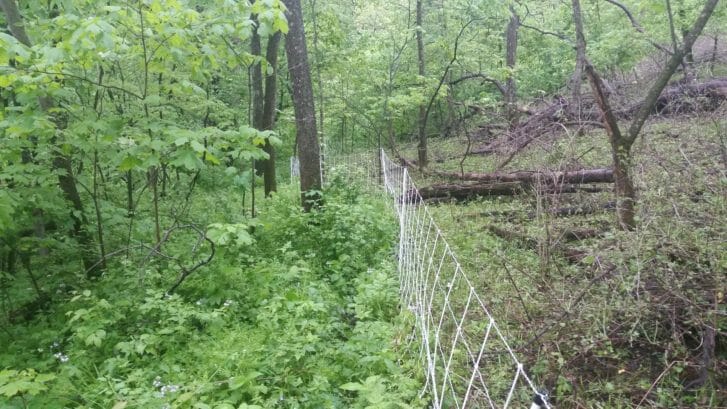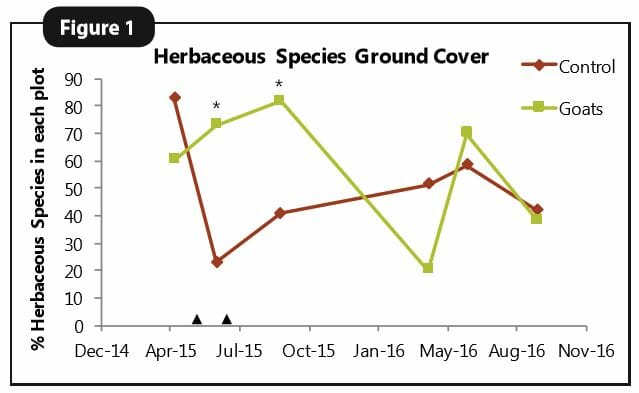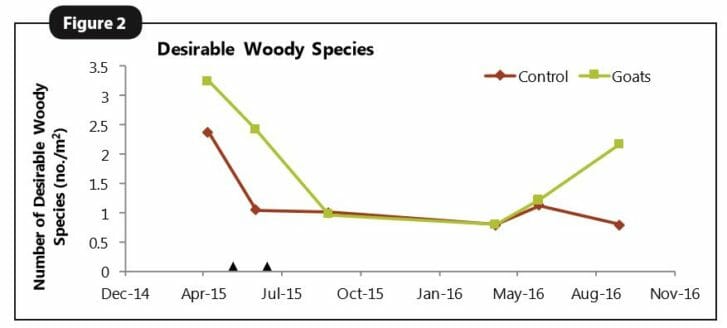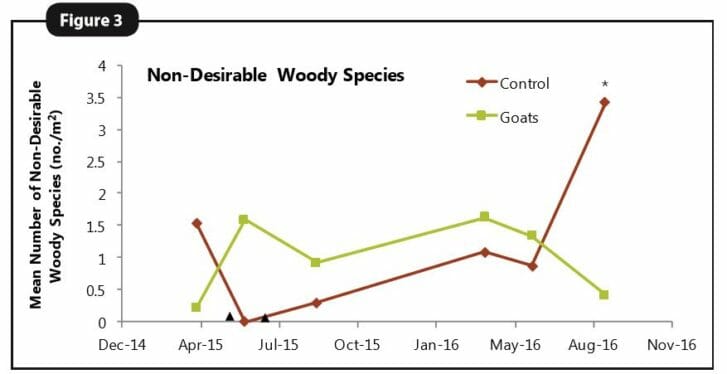RESEARCH REPORT: Using Goats to Control Invasive Species
Goats are becoming increasingly popular for managing unwanted vegetation because they provide a ‘green’ alternative to pesticides while benefitting the animals and land. This project evaluated the use of goats to control invasive species, such as honeysuckle and multiflora rose, and invigorate native savanna growth. A research plot was established for comparing the effectiveness of goats – goats browsed certain areas and were not allowed to browse in others.
Penny Perkins, an ecologist specializing in land rehabilitation, conducted this project in 52 acres of timber near Ogden, IA. “Goats can be a viable, practical, and affordable tool to maintain timber stands; a tool that landowners should take advantage of,” stated Penny.
Read the full report here: Using Goats to Control Invasive Species

Timber that goats browsed is shown on the right. Goats help control invasive species.
Trial methods:
- Two treatments were established; goat browsing versus no management at all.
- Each treatment was replicated 4 times, for a total of 8 plots.
- 40 Kiko goats browsed 4 of the plots twice in 2015; no grazing took place in 2016.
- Vegetation counts were taken along transects in each plot; desirable and non-desirable plant species were counted three times per year.
- In June and September of year one, significantly more herbaceous vegetation was present in the plots browsed by goats. By the end of year two, there was no significant difference in herbaceous vegetation between treatments (see Figure 1). “With the presence of goats, there’s less canopy, allowing more light to reach the understory. I believe that’s why there were more herbaceous species present in year one, while goats browsed, than in year two, when goats weren’t there,” explained Penny.

Herbaceous species ground cover over two growing seasons, from April 2015 to September 2016. By the end of 2016, there was no significant difference between treatments. Black triangles designate the start of the two, two-week goat browsing periods in 2015. (*) indicates sample dates when the two treatments were significantly different at the P < 0.10 level.
- There was no significant difference in number of desirable woody species between treatments (see Figure 2). This means, “One year of goat browsing did not prove to have a detrimental effect on our desirable woody species, such as oaks,” said Penny. This is a positive finding when trying to restore an oak savannah.

Number of desirable woody species from April 2015 to September 2016 in each treatment. There was no significant difference between treatments.
- By the end of the study, there was a significant difference in non-desirable woody species. The browsed timber plots contained significantly less non-desirable woody species (see Figure 3). “One year of browsing seemed to keep the non-desirable species from proliferating, compared to the control where there was a spike in growth in year two,” stated Penny.

Number of non-desirable woody species from April 2015 to September 2016 in each treatment. By September 2016, the browsed treatment plots had significantly fewer non-desirable species than the control plots.
